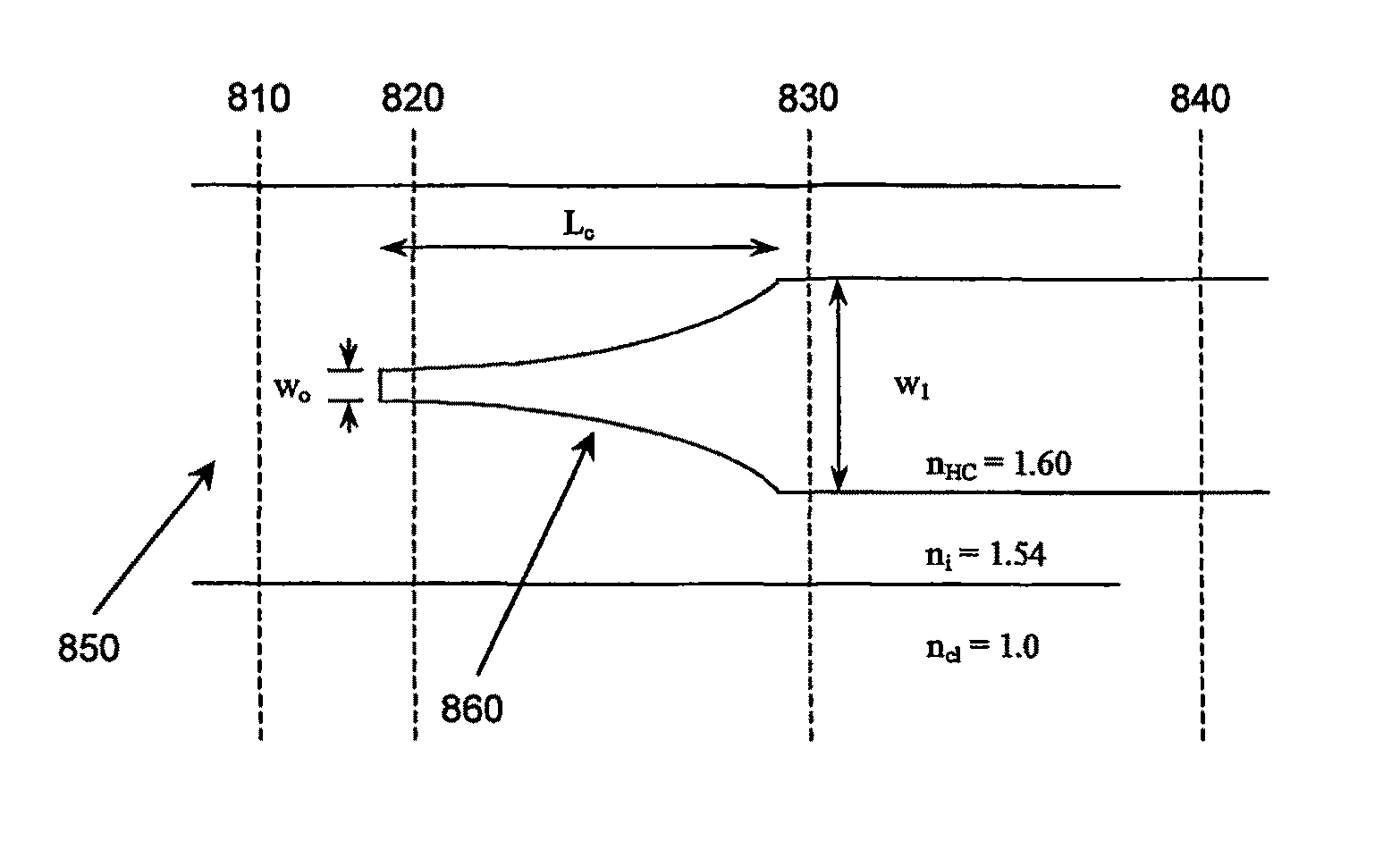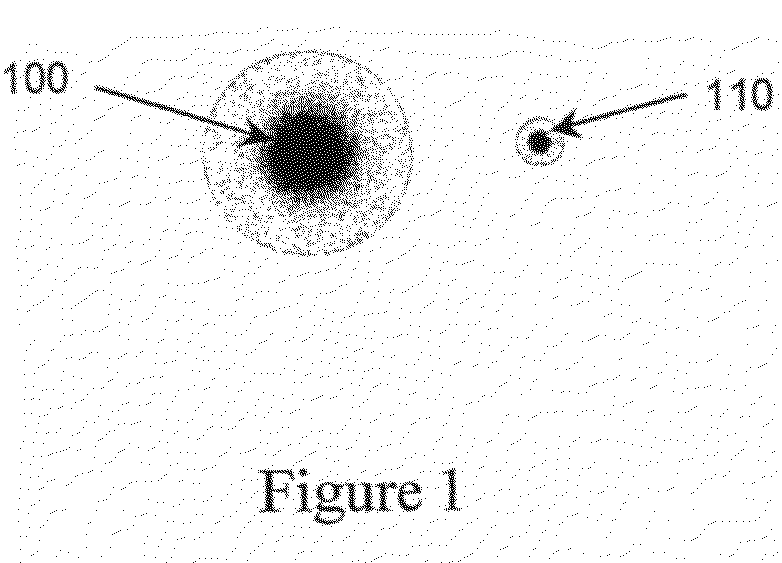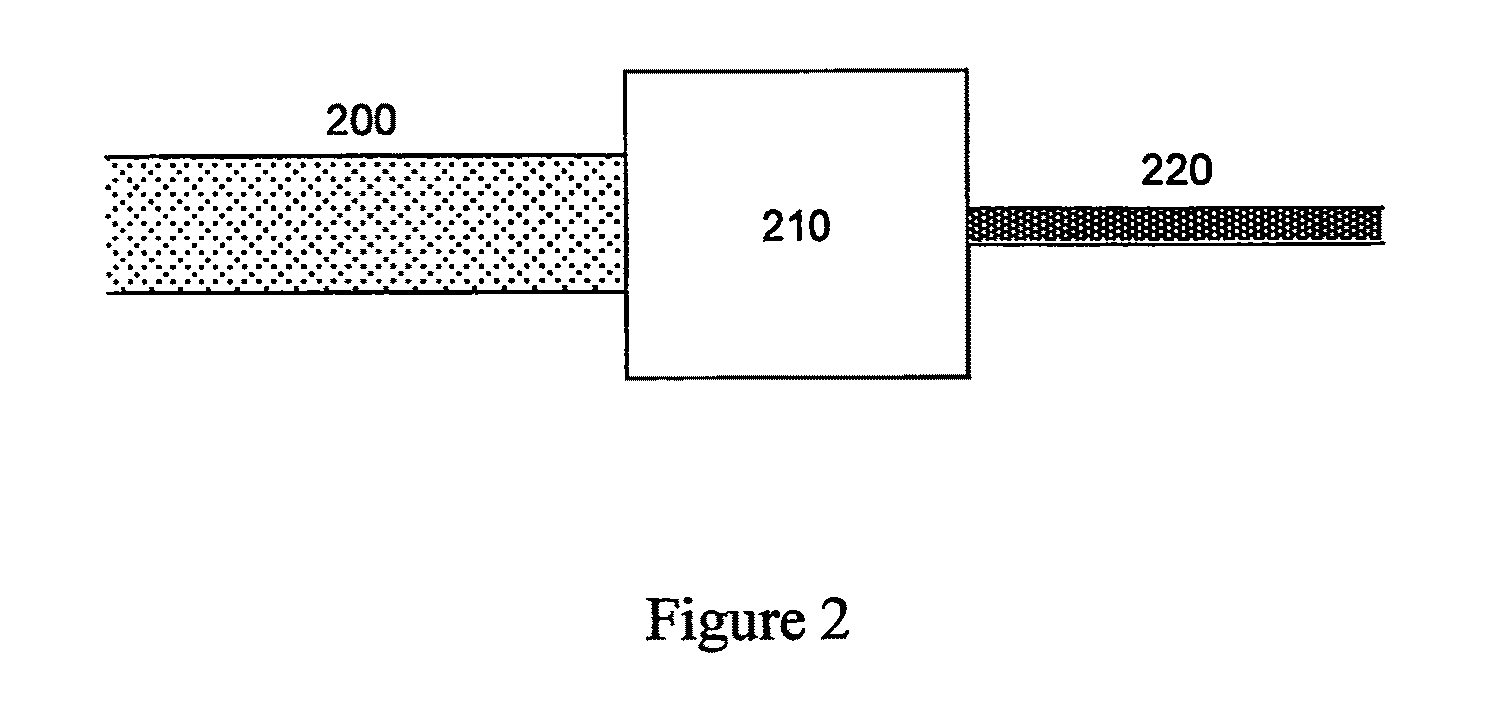High efficiency optical mode transformer for matching a single mode fiber to a high index contrast planar waveguide
a high-efficiency, planar waveguide technology, applied in the direction of optical waveguide light guide, optical elements, instruments, etc., can solve the problems of not being able to achieve mode transformation to or from a high index difference waveguide, not being able to perform lithographic processes in time, and not being able to control etching techniques and therefore difficult to manufactur
- Summary
- Abstract
- Description
- Claims
- Application Information
AI Technical Summary
Benefits of technology
Problems solved by technology
Method used
Image
Examples
Embodiment Construction
[0043]The following description will further help to explain the inventive features of the High Efficiency Optical Mode Transformer for Matching a Single Mode Fiber with a High-Index Contrast Planar Waveguide on a microchip.
[0044]The approach used in this invention is to separate the problem into two steps with definitive objectives. The first objective is to get optical power from the SM fiber onto the chip (but not into the HC guide) with the highest possible efficiency. Once high efficiency connectivity and optical power transmission is established onto the chip, power is then transferred into the HC waveguide via an on chip mode transformer.
[0045]A large planar waveguide is fabricated on the chip for the purpose of obtaining maximum coupling efficiency from a fiber to a specific structure on the chip. The dimensions of the large waveguide are chosen so as to achieve maximum coupling efficiency. This waveguide is referred to as a fiber-matched waveguide. An optical mode transform...
PUM
 Login to View More
Login to View More Abstract
Description
Claims
Application Information
 Login to View More
Login to View More - R&D
- Intellectual Property
- Life Sciences
- Materials
- Tech Scout
- Unparalleled Data Quality
- Higher Quality Content
- 60% Fewer Hallucinations
Browse by: Latest US Patents, China's latest patents, Technical Efficacy Thesaurus, Application Domain, Technology Topic, Popular Technical Reports.
© 2025 PatSnap. All rights reserved.Legal|Privacy policy|Modern Slavery Act Transparency Statement|Sitemap|About US| Contact US: help@patsnap.com



